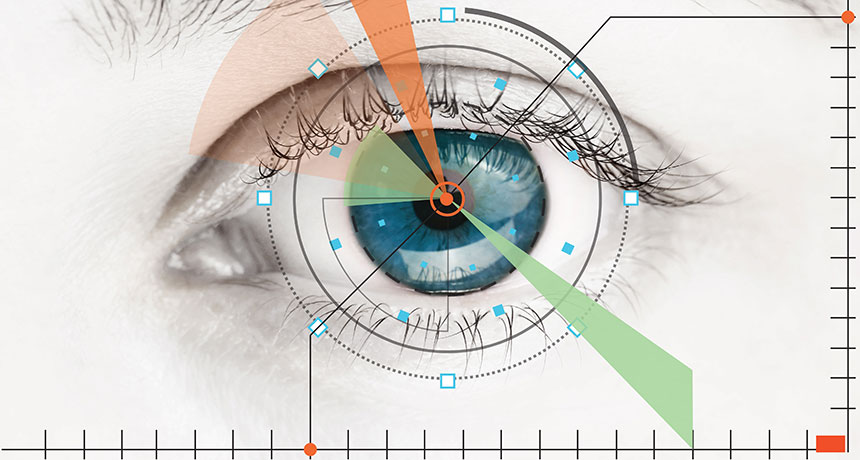n the future, an AI may diagnose eye problems

The computer will see you now.
Artificial intelligence algorithms may soon bring the diagnostic know-how of an eye doctor to primary care offices and walk-in clinics, speeding up the detection of health problems and the start of treatment, especially in areas where specialized doctors are scarce. The first such program — trained to spot symptoms of diabetes-related vision loss in eye images — is pending approval by the U.S. Food and Drug Administration.
While other already approved AI programs help doctors examine medical images, there’s “not a specialist looking over the shoulder of [this] algorithm,” says Michael Abràmoff, who founded and heads a company that developed the system under FDA review, dubbed IDx-DR. “It makes the clinical decision on its own.”
IDx-DR and similar AI programs, which are learning to predict everything from age-related sight loss to heart problems just by looking at eye images, don’t follow preprogrammed guidelines for how to diagnose a disease. They’re machine-learning algorithms that researchers teach to recognize symptoms of a particular condition, using example images labeled with whether or not that patient had that condition.
IDx-DR studied over 1 million eye images to learn how to recognize symptoms of diabetic retinopathy, a condition that develops when high blood sugar damages retinal blood vessels (SN Online: 6/29/10). Between 12,000 and 24,000 people in the United States lose their vision to diabetic retinopathy each year, but the condition can be treated if caught early.
Researchers compared how well IDx-DR detected diabetic retinopathy in more than 800 U.S. patients with diagnoses made by three human specialists. Of the patients identified by IDx-DR as having at least moderate diabetic retinopathy, more than 85 percent actually did. And of the patients IDx-DR ruled as having mild or no diabetic retinopathy, more than 82.5 percent actually did, researchers reported February 22 at the annual meeting of the Macula Society in Beverly Hills, Calif.
IDx-DR is on the fast-track to FDA clearance, and a decision is expected within a few months, says Abràmoff, a retinal specialist at the University of Iowa in Iowa City. If approved, it would become the first autonomous AI to be used in primary care offices and clinics.
AI algorithms to diagnose other eye diseases are in the works, too. An AI described February 22 in Cell studied over 100,000 eye images to learn the signs of several eye conditions. These included age-related macular degeneration, or AMD — a leading cause of vision loss in adults over 50 — and diabetic macular edema, a condition that develops from diabetic retinopathy.
This AI was designed to flag advanced AMD or diabetic macular edema for urgent treatment, and to refer less severe cases for routine checkups. In tests, the algorithm was 96.6 percent accurate in diagnosing eye conditions from 1,000 pictures. Six ophthalmologists made similar referrals based on the same eye images.
Researchers still need to test how this algorithm fares in the real world where the quality of images may vary from clinic to clinic, says Aaron Lee, an ophthalmologist at the University of Washington in Seattle. But this kind of AI could be especially useful in rural and developing regions where medical resources and specialists are scarce and people otherwise wouldn’t have easy access to in-person eye exams.
AI might also be able to use eye pictures to identify other kinds of health problems. One algorithm that studied retinal images from over 284,000 patients could predict cardiovascular health risk factors such as high blood pressure.
The algorithm was 71 percent accurate in distinguishing eye images between smoking and nonsmoking patients, according to a report February 19 in Nature Biomedical Engineering. And it predicted which patients would have a major cardiovascular event, such as a heart attack, within the next five years 70 percent of the time.
With AI getting more adept at screening for a growing list of conditions, “some people might be concerned that this is machines taking over” health care, says Caroline Baumal, an ophthalmologist at Tufts University in Boston. But diagnostic AI can’t replace the human touch. “Doctors will still need to be there to see patients and treat patients and talk to patients,” Baumal says. AI will just help people who need treatment get it faster.